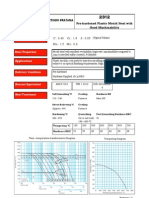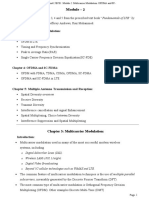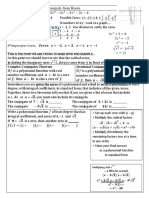0% found this document useful (0 votes)
25 views4 pagesIntroduction To Cable Sizing Equations
The document outlines the cable sizing equations provided by BS 7671, detailing five equations for different installation scenarios to ensure safe cable sizing. It emphasizes the importance of Equations 3 and 4 for grouped circuits that are not liable to simultaneous overload, allowing for smaller cable sizes compared to Equation 2. The conclusion stresses the need for understanding the correct application of these equations for compliant and economical electrical designs.
Uploaded by
clintstampertrainingCopyright
© © All Rights Reserved
We take content rights seriously. If you suspect this is your content, claim it here.
Available Formats
Download as DOCX, PDF, TXT or read online on Scribd
0% found this document useful (0 votes)
25 views4 pagesIntroduction To Cable Sizing Equations
The document outlines the cable sizing equations provided by BS 7671, detailing five equations for different installation scenarios to ensure safe cable sizing. It emphasizes the importance of Equations 3 and 4 for grouped circuits that are not liable to simultaneous overload, allowing for smaller cable sizes compared to Equation 2. The conclusion stresses the need for understanding the correct application of these equations for compliant and economical electrical designs.
Uploaded by
clintstampertrainingCopyright
© © All Rights Reserved
We take content rights seriously. If you suspect this is your content, claim it here.
Available Formats
Download as DOCX, PDF, TXT or read online on Scribd
/ 4
































































